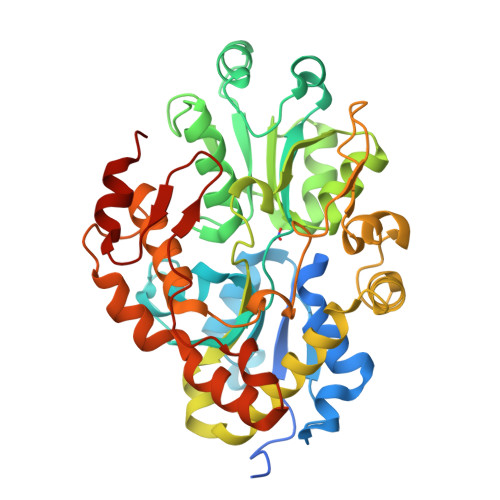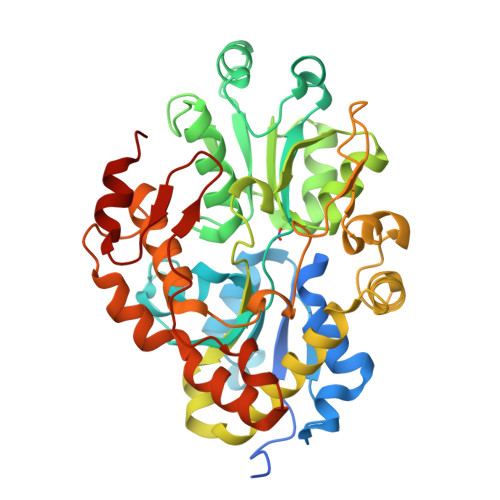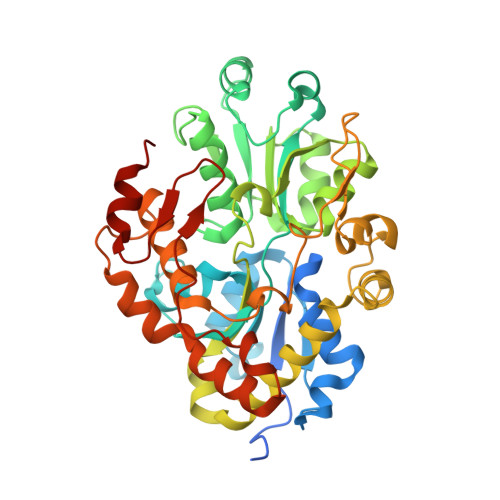Atomic structure of a nitrate-binding protein crucial for photosynthetic productivity
Koropatkin, N.M., Pakrasi, H.B., Smith, T.J.(2006) Proc Natl Acad Sci U S A 103: 9820-9825
- PubMed: 16777960
- DOI: https://doi.org/10.1073/pnas.0602517103
- Primary Citation of Related Structures:
2G29 - PubMed Abstract:
Cyanobacteria, blue-green algae, are the most abundant autotrophs in aquatic environments and form the base of all aquatic food chains by fixing carbon and nitrogen into cellular biomass. The single most important nutrient for photosynthesis and growth is nitrate, which is severely limiting in many aquatic environments particularly the open ocean. It is therefore not surprising that NrtA, the solute-binding component of the high-affinity nitrate ABC transporter, is the single-most abundant protein in the plasma membrane of these bacteria. Here, we describe the structure of a nitrate-specific receptor, NrtA from Synechocystis sp. PCC 6803, complexed with nitrate and determined to a resolution of 1.5 A. NrtA is significantly larger than other oxyanion-binding proteins, representing a previously uncharacterized class of transport proteins. From sequence alignments, the only other solute-binding protein in this class is CmpA, a bicarbonate-binding protein. Therefore, these organisms created a solute-binding protein for two of the most important nutrients: inorganic nitrogen and carbon. The electrostatic charge distribution of NrtA appears to force the protein off the membrane while the flexible tether facilitates the delivery of nitrate to the membrane pore. The structure not only details the determinants for nitrate selectivity in NrtA but also the bicarbonate specificity in CmpA. Nitrate and bicarbonate transport are regulated by the cytoplasmic proteins NrtC and CmpC, respectively. Interestingly, the residues lining the ligand binding pockets suggest that they both bind nitrate. This implies that the nitrogen and carbon uptake pathways are synchronized by intracellular nitrate and nitrite.
Organizational Affiliation:
Donald Danforth Plant Science Center, 975 North Warson Road, St. Louis, MO 63132, USA.



















